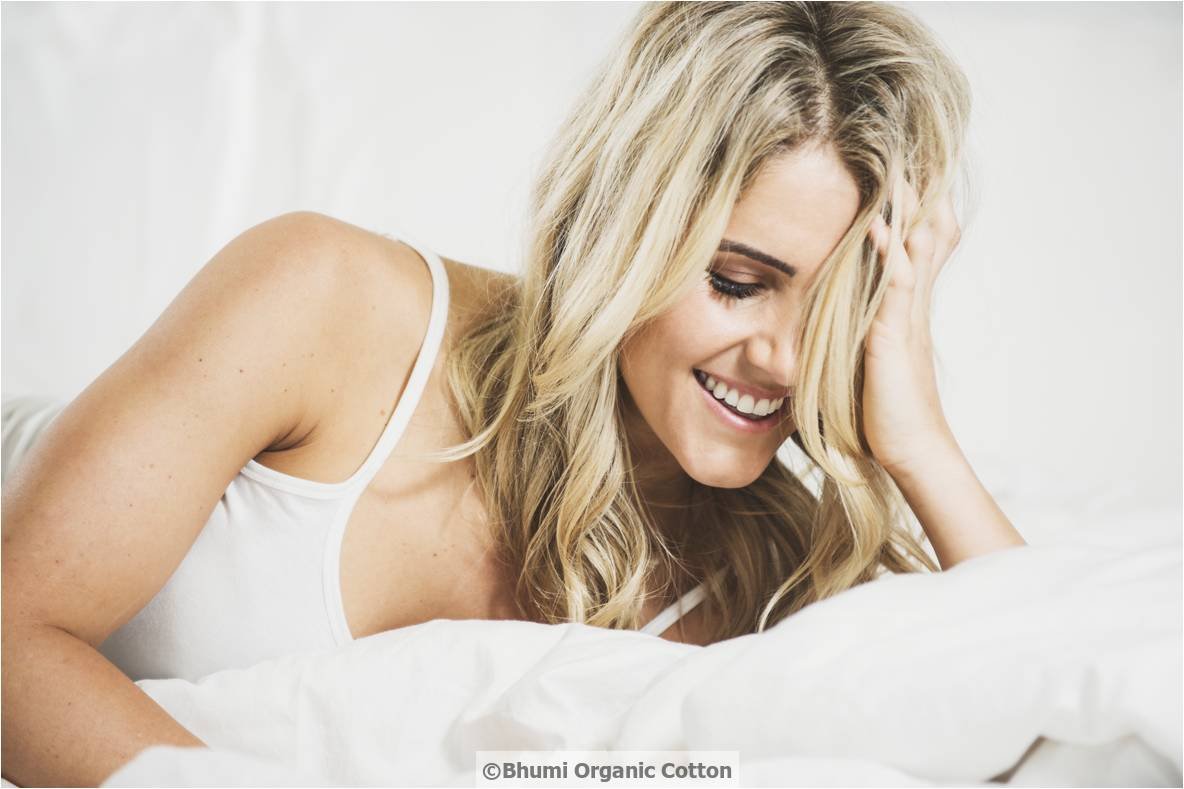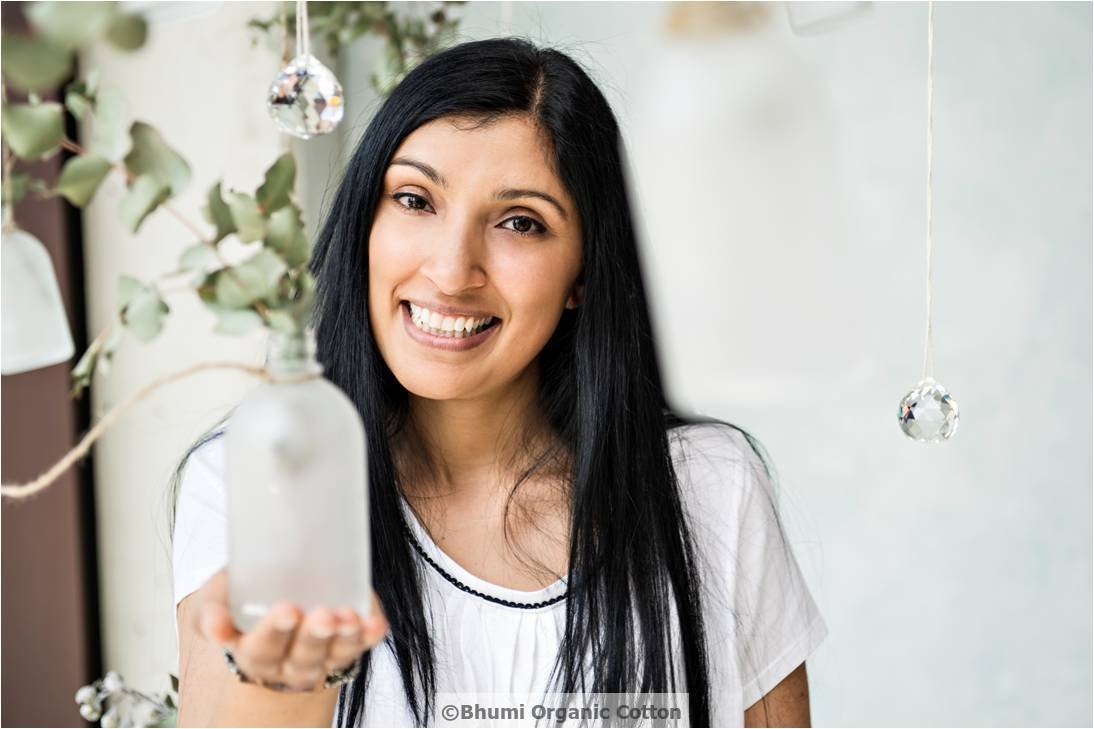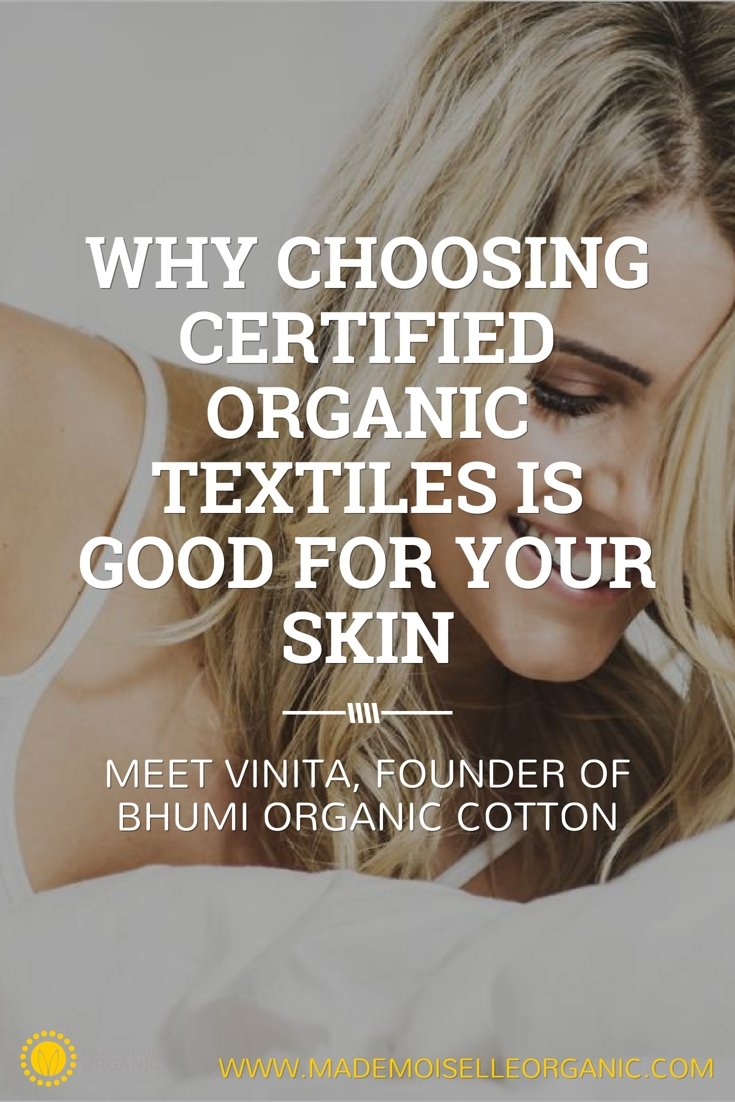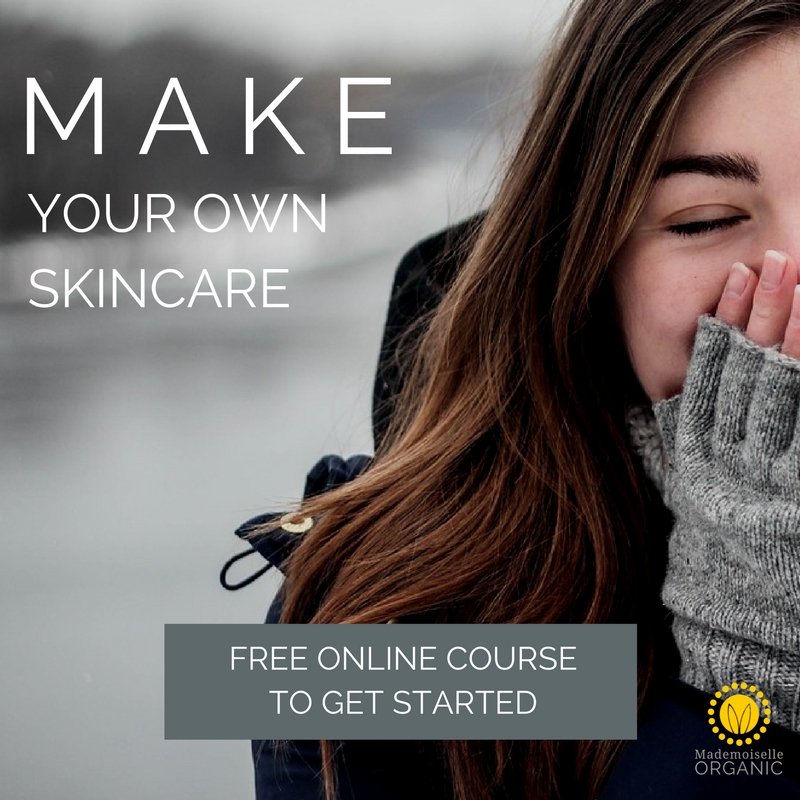Your beautiful skin is the largest and most absorbent organ of your body. It is the first contact with the world around you and it is in a constant exchange with your environment. Your skin breathes. You sweat out toxins and you also absorb back in through your pores. Have you stopped to consider what products and external environments you interact with each day and each night?
It only takes 6 seconds for chemicals to enter into your bloodstream and if your body is warm, the increased body heat will accelerate absorption. So what are you really putting on your skin? Of the countless chemicals in your bathrooms, households and workplaces, many of them are toxic and all too common across the range. If you look at your labels you will see the words Parabens and phthalates (‘fragrance’), the most common ones that are highly correlated with interference to hormonal processes and carcinogenic tumours and are found in many cosmetics, deodorants, and cleaning products.
And in the textile industry this is dangerous because the toxins are hidden as there are no labelling laws. What are you exposing your skin to all day and all night long? 24 hours a day, your skin is in contact with some form of textile, be it the towel you dry off with, your underwear, your gym gear, your clothes, your pyjamas or the sheets you sleep on.
What is staggering and not talked about enough is that there is no legislation to state what is actually in your textiles or even state what dyes and colours are used that are toxic. During the journey of conventional cotton into clothing, numerous toxic chemicals are added at each stage— pesticides, fertilisers, silicone waxes, harsh petroleum scours, softeners, heavy metals, flame and soil retardants, fasteners, ammonia, dyes, colourants, finishers, caustic soda, sulphuric acid, bromines, urea resins, halogens and formaldehyde— to name just a few.
Other synthetic fibres like acrylic, nylon and polyester are coated with formaldehyde finishes that continuously give off plastic vapors as the fabric is warmed against your skin, causing allergies and breathing problems from the airborne particles and effects of formaldehyde in contact with the skin surfaces.
Chemical residues affect people of all ages with Multiple Chemical Sensitivities. People develop allergic reactions, hives, urticaria, dermatitis from exposure on skin to formaldehyde, dyes and other chemicals and metals.
Lets take a closer look at the sheet you sleep in. British Designer from Grand Designs Kevin McLeod is a big advocate for certified organic cotton and writes in his book Principles of Home: Making a Place to Live: “ I am assuming you sleep in cotton sheets.. And I need to put you off cotton. Why? Well in a newly bought 100 % cotton bed sheet or pillowcase, there is only 73% of cotton, the rest being chemicals added to the fabric during growing or treatment, including formaldehyde. Not that this is the worst chemical you will be sleeping on: Aldicarb, Parathion, and Methamidophos are in the top 10 insecticide treatments for cotton crops (used extensively all over the world including the US) and are 3 of the most acutely hazardous chemicals listed by the World Health Organisation. Indeed, according to the Environmental Protection Agency, 7 out of the top 15 chemicals used on cotton are possible, known, likely or probable human carcinogens. Others are hormone disruptors and toxic in many other ways.” We breathe all of that into our skin and bloodstream when we sleep, forcing our immune systems to fight an uphill battle. Making the switch from conventional cotton to certified organic cotton will have a positive healthy impact on your health and well-being as well as that of the earth.
 Watch out for words like: NATURAL, PURE COTTON, PURE, EVEN ORGANIC as these terms can be too loosely used. Ask questions… Find out the process that the textile you use, wear or sleep in, has to go through. Strict certifications are key to know with absolute certainty that there are no toxic chemical used from seed to shelf, and thus enable you to create your toxic free sanctuary.
Watch out for words like: NATURAL, PURE COTTON, PURE, EVEN ORGANIC as these terms can be too loosely used. Ask questions… Find out the process that the textile you use, wear or sleep in, has to go through. Strict certifications are key to know with absolute certainty that there are no toxic chemical used from seed to shelf, and thus enable you to create your toxic free sanctuary.
In the textile world, look for GOTS (Global Organic Textile Standard) and in Australia ACO (Australian Certified Organic) certified organic cotton. These certifications guarantee a positive impact from seed to shelf, on both humanity and the environment – as they exist together.
Being strict on certifications ensures that along the whole supply chain from SEED to SHELF, there are:
- no GM seeds
- no harmful chemicals, insecticides, and pesticides
- no toxic dyes, bleaches or finishes
- no child labour
- fair wages and safe working conditions
Overall, this results in having the lowest environmental impact, a deep sense of social justice with fair trade practices and also the purest and softest cotton, that is resilient and gentle on your skin.
At Bhumi, we are very passionate about education and awareness of what is going on in the textile industry. We strongly believe that knowledge brings power. Power brings choice. Choice brings change. Change is for the better – for the earth and for humanity.
About Vinita
 Vinita has been fortunate to travel to many exciting destinations on the planet and experience the beauty of nature and cultures of the world. With a background in Health and a Masters in International Public Health, Vinita saw first hand the disastrous health and environmental impacts of traditional cotton growing with farmer suicides, child labour, pesticide poisoning, birth defects, harmful dyes and toxic water ways. After years in the field meeting with amazing NGOs, grassroots organizations and a growing movement of organic farmers, it was time for positive change. Vinita combined her deep love for the Earth, humanity and sustainable design to create Bhumi Organic Cotton.
Vinita has been fortunate to travel to many exciting destinations on the planet and experience the beauty of nature and cultures of the world. With a background in Health and a Masters in International Public Health, Vinita saw first hand the disastrous health and environmental impacts of traditional cotton growing with farmer suicides, child labour, pesticide poisoning, birth defects, harmful dyes and toxic water ways. After years in the field meeting with amazing NGOs, grassroots organizations and a growing movement of organic farmers, it was time for positive change. Vinita combined her deep love for the Earth, humanity and sustainable design to create Bhumi Organic Cotton.
For more information, check out the Bhumi website, bhumi.com.au, and follow their beautiful Facebook and Instagram pages.
Learn how to make your own skincare – Click the below image for a FREE Introduction to DIY Skincare
Disclaimer: I was not financially compensated for this post. I do not endorse opinions, advice or any information given by guest writers and interviewees. They are completely their own. For information on how to use this site, please read my Blog Policy page.


